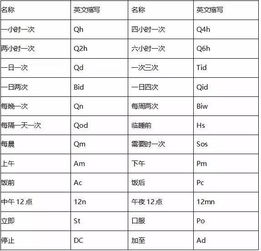Understanding the Trade Order Abbreviation: What Does "T/O" Mean in International Trade?
In the vast and intricate world of international trade, every detail counts, and communication is key. One of the fundamental aspects of trade is the process of placing orders, which is crucial for the smooth flow of goods and services across borders. To facilitate this process, traders and businesses often use abbreviations to streamline their communication. One such abbreviation that is widely recognized in the trade industry is "T/O," which stands for "Trade Order." Let's delve into what this abbreviation means and its significance in the global trade landscape.
What is a Trade Order?
A trade order is a formal request made by a buyer to a seller to supply a specific quantity of goods or services at an agreed-upon price. This process is a cornerstone of international trade, as it outlines the terms and conditions under which the transaction will take place. The trade order serves as a contract between the buyer and seller, ensuring that both parties are clear about the details of the transaction.
The Significance of "T/O" in Trade
The abbreviation "T/O" is a concise way to refer to a trade order in written or verbal communication. Its use is particularly prevalent in the following scenarios:
Streamlining Communication: In the fast-paced environment of international trade, time is of the essence. Using "T/O" as an abbreviation for "Trade Order" helps to convey the message quickly and efficiently, without the need for lengthy explanations.

Standardization: The use of standardized abbreviations like "T/O" helps to ensure that there is a common understanding among traders and business professionals. This standardization is especially important in global trade, where communication may span across different languages and cultures.
Documentation: In trade documentation, such as purchase orders, invoices, and shipping documents, the abbreviation "T/O" can be used to refer to the trade order. This helps to keep the documentation concise and easy to read.
How to Use "T/O" in Practice
Here are some examples of how "T/O" might be used in various contexts:
The Role of "T/O" in the Supply Chain
The trade order is a critical document in the supply chain, as it triggers a series of actions that lead to the delivery of goods or services. Here's a simplified overview of the process:
Order Placement: The buyer places a T/O with the seller, specifying the product, quantity, price, and delivery terms.
Order Processing: The seller receives the T/O and processes it, which may involve verifying the buyer's credit, checking inventory, and preparing the goods for shipment.
Production or Procurement: If the goods are not in stock, the seller may need to produce or procure them.
Shipment: Once the goods are ready, they are shipped to the buyer, often with the T/O number included in the shipping documents.
Delivery and Receipt: The buyer receives the goods and confirms the receipt, which may involve inspecting the goods and verifying the quantity and quality.
Payment: After the goods have been received and inspected, the buyer makes the payment as per the agreed-upon terms.
Conclusion
The abbreviation "T/O" for "Trade Order" is a simple yet powerful tool in the world of international trade. It helps to streamline communication, standardize processes, and ensure that all parties involved in a transaction are on the same page. By understanding the significance of "T/O" and how it fits into the broader context of trade, businesses can navigate the complexities of global commerce more effectively. Whether you are a seasoned trader or just entering the field, familiarizing yourself with the language and abbreviations of trade will undoubtedly enhance your ability to conduct successful transactions.